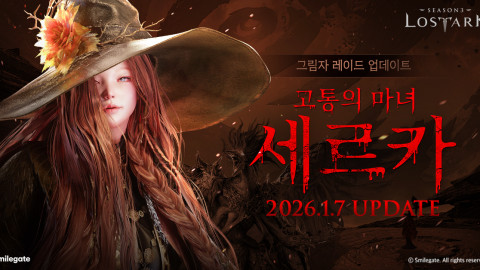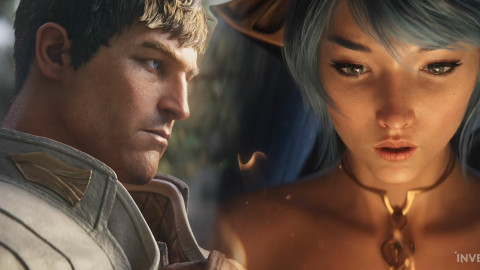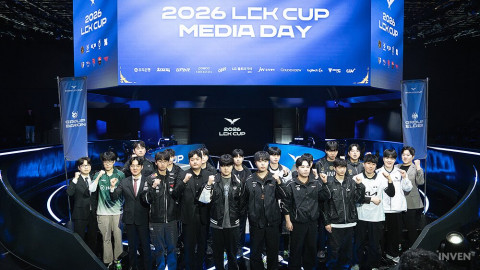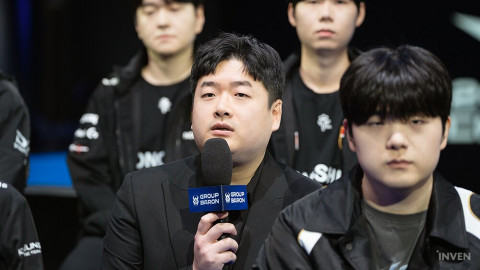
One of the most anticipated releases of the year, Final Fantasy 7 Rebirth (FF7 Rebirth), is set to launch on February 29th. This title holds significant meaning not only for fans of the original Final Fantasy 7 but also for those introduced to the game through the remake project. Final Fantasy 7 Remake was groundbreaking, which introduced a departure from the original storyline and delivered a shocking ending. FF7 Rebirth is the second part and serves as the cornerstone of the three-part remake project.
Departing from the bustling city of Midgar, Cloud and his companions embark on a journey to chase Sephiroth and determine the fate of the planet. Unlike its predecessor, which primarily took place in Midgar, FF7 Rebirth presents a vast world for players to explore. With a shift towards an open-world structure from the linear design of the original, the game has undergone significant changes. Additionally, enhancements to the battle system, including refined mechanics and the introduction of chain actions and abilities, add depth to the gameplay experience.
The shocking narrative developments persist, with moments that leave players pondering, "How will they recover from this?" Yet, in this review, we aim to tread lightly on story elements to preserve the experience for fans who have eagerly awaited this title for four years. With utmost respect for those seeking to immerse themselves fully in the game, we endeavor to minimize spoilers.
However, one aspect warrants discussion—the game's comprehensive excellence across story, combat systems, world design, and various mini-games.
Enhanced mechanics and a new chain system
Sequels are inherently destined to continue the story while introducing new elements to surpass their predecessors. FF7 Rebirth is no exception to this fate. To surpass the original and avoid stagnation, it must evolve beyond its predecessor. It must become not just an heir, but an improvement. In this regard, FF7 Rebirth faces a significant challenge. Sharing the title of the monumental Final Fantasy 7 Remake project, it must transcend expectations. Although part of a three-part series, it is considered a standalone title rather than a numbered sequel.

In this context, FF7 Rebirth may initially appear similar to its predecessor. However, this observation is not intended negatively. It can be viewed as a testament to seamlessly inheriting the systems of the previous game. Indeed, despite the approximately three-year gap since the release of the Intergrade edition, players required no significant adjustment period. Nevertheless, mere replication of previous elements is insufficient. Without innovation, FF7 Rebirth risks being perceived as derivative rather than progressive. Thus, FF7 Rebirth sought to address this challenge by introducing the chain System.
The chain System, an enhanced version of the synergy mode introduced in the Intergrade and Intermission, represents a departure from its predecessor. While the synergy mode was relatively simplistic, activating it would prompt Yuffie and Sonon to unleash coordinated attacks or strengthen certain abilities using each other's ATB gauges. It merely provided a minor variation to the battle system.
In FF7 Rebirth, the chain System has undergone substantial improvements. It now comprises chain Actions and chain Abilities, offering a more nuanced approach to combat.

The action that is commonly used is the chain action. Although it has the advantage of not consuming the ATB gauge, in reality, it was not well utilized at first due to unfamiliarity. Since the chain action varies depending on the combination of battle members and, like shortcuts, activates in real-time, it is necessary to know what type of chain action it is and when it is effective.
However, once you overcome this slight inconvenience, you can feel the essence of combat in FF7 Rebirth. During battles, there are times when it's difficult to fill the ATB gauge with regular attacks. It could be due to enemies that are resistant to regular attacks or battle members vulnerable to long-range attacks. In such cases, the chain action fills the gap. Cloud and Aerith are prime examples.
In the case of Cloud, he can deliver a powerful blow after charging with a chain action or enhance his lacking long-range attack abilities. Aerith, on the other hand, can compensate for her vulnerability in close combat by using a chain action called Change Guard, which allows allies to block enemy attacks on her behalf. Depending on how well you use the chain action, you can maximize advantages and minimize disadvantages.

Not only that, but it can also be used to quickly fill the ATB gauge of allies. Since some chain actions fill the ATB gauge of accompanying allies, it becomes easier to fill the ATB gauge without having to change the controlled character each time.
However, there is a catch to these chain actions. Because they do not consume the ATB gauge, they could seem versatile at first glance, but if used carelessly, they might not be as effective as expected. Immediate activation or attacking after charging with a chain action may be relatively easy to use, but with counter-type chain actions, timing is crucial. If not used skillfully, you might end up dealing less damage or facing significant harm by using them unnecessarily. This implies the need for strategic usage depending on the situation.


Chain actions expand the variety of combat by providing additional strategies beyond just regular attacks and abilities. Although the usage may seem simple compared to chain actions, chain abilities consume the accumulated chain gauge, which is filled by characters spending their individual ATB gauges.
At first glance, the link abilities may not seem significantly different from the chain abilities in Intermission. However, FF7 Rebirth enhances its strategic depth by adding various additional effects. These effects range from granting buffs without MP consumption to increasing the potency when performing a burst attack. Depending on whether the limit break is ready, you can strategically choose to use a chain ability with a limit level increase effect or one that increases the potency during a burst attack to deal massive damage in a short amount of time. This not only enhances the strategic depth but also adds to the enjoyment of combat through visually impressive sequences.
There are also elements that enhance the tactile experience. The heightened variety of enemy gimmicks adds to the excitement of battles. In simple terms, these gimmicks involve various elements that can put enemies into a 'Heat' state in addition to exploiting their weaknesses or attacking specific parts.
For instance, if you successfully evade a specific enemy attack at the perfect timing or activate a just guard to block attacks accurately, it triggers a gimmick that puts the enemy in a 'Heat' state. Although these additions may not be as noticeable compared to the chain system, they enhance the tactile experience of FF7 Rebirth as a real-time action game. It feels like the balance has shifted more towards action compared to the ratio between real-time combat and ATB commands in the past.

While these gimmicks add complexity, there is no need to worry if you're not confident in your control skills. As these are additional elements added to the existing method of exploiting weaknesses using elemental magic, you can comfortably play as you did before, focusing on exploiting weaknesses if you're not confident in your control skills.
Additionally, although they don't directly affect combat, there have been subtle changes related to combat presentation. Unlike in the previous game, where only three battle members were displayed on the screen during combat, FF7 Rebirth has improved this aspect. It shows non-battle member allies participating in combat as well, giving the impression that they are also contributing. Although they don't deal any meaningful damage to enemies, this small improvement seems to evoke attachment to these allies, making it a small yet significant enhancement.
To sum up, the newly added and improved combat systems in FF7 Rebirth may require some adaptation, but beyond the slight inconvenience lies the satisfaction and enjoyment that outweigh the discomfort.
Open World, the fun of exploration properly preserved

While the combat system closely resembles an evolution of its predecessor, the world has changed so much that it can be considered entirely new. The most significant change is the shift from a linear structure to a more open-world format. This means much more than just expanding the game's stage — it signifies a significant transformation.
An open world requires fitting content. Empty expanses are just as bad as the worst scenarios. If you're expanding the game's stage, you need diverse content to fill it. FF7 Rebirth truly enriched the vast stage with a variety of content, including diverse mounts, mini-games, and sub-content named World Reports.
However, having numerous content to fill the open world doesn't necessarily mean it's always a good thing. Having too much unnecessary content can be distracting. In fact, in recent years, some open-world games received criticism for stuffing too much content, leading to a lack of focus. Balance is key. It's about filling the open world with an appropriate amount of content — not too much, not too little.

In that sense, the World Reports in FF7 Rebirth seem to strike the right balance. They are neither overwhelmingly abundant nor unnecessarily hidden. As sub-content, they maintain a moderate level.
The variety is quite substantial. From communication towers, subjugation bases, summon crystals, life spots to ancient matter analysis, Moguri shops, secret enemy subjugations, and other hidden elements, the structure is not significantly different from other open-world games. The gameplay sensation of each content is also similar.
For example, activating communication towers unlocks nearby locations like subjugation bases or life spots, and defeating formidable enemies at subjugation bases is a common theme. Similarly, the summon crystals and life spot analyses follow similar patterns. They are a form of collection content, differing slightly in their presentation.
These World Reports, while straightforward, also serve as elements that allow players to intuitively enjoy FF7 Rebirth's open world. Gradually unlocking them starting with communication towers not only relieves the pressure of dealing with overwhelming markers filling the areas but also naturally encourages exploration by guiding players to roam around the areas.


However, not all World Reports were easy. If they were, they risked feeling too monotonous. FF7 Rebirth adjusted the pace with two core contents: Secret Enemy Subjugation and Ancient Matter.
The Secret Enemy Subjugation adds tension to relaxed battles by requiring some analysis of life spots to unlock, creating an element of anticipation. On the other hand, Ancient Matter presents a continuous sub-story, giving the World Reports a sense of necessity. While separate from the main story, they offer their own narratives and generate natural anticipation for what comes next.


The addition of Item Crafting, along with the transition to an open world, is noteworthy. While the game is filled with various content, there are moments when HP or MP runs low during battles. If you don't have enough potions, you'd usually have to return to a rest point for recovery. This interruption, although unavoidable, can disrupt the flow of gameplay. This was an issue even in the linear structure of the previous game, and in the open world of FF7 Rebirth, it could become even more pronounced.
However, that wasn't the case in practice, thanks to Item Crafting. If your HP or MP runs low and you don't have potions, you can simply craft them using materials collected while exploring the area. You can even craft armor and accessories.
Of course, crafting items can be somewhat labor-intensive compared to purchasing consumable items like potions, as they require materials obtained from defeating monsters. However, most materials can be obtained naturally while completing World Reports or side quests.

Item Crafting, enabling self-sufficiency, not only supplements equipment-based growth during the main story but also ensures continuous play, providing a seamless exploration experience. In fact, the instances where I had to return to rest points were rare. Moreover, most of those instances were not for resting but rather to unlock skill cores. By minimizing back-and-forth travel time, the game encourages deeper immersion.
A solid foundation laid, worth the 4-year wait
I can't delve into the story in detail, but in simple terms, it was truly a time well spent after 4 years of anticipation. Not only has there been significant progress in terms of systems compared to the previous installment, but the somewhat convoluted story is also being gradually clarified. Concerns about whether it would follow the original storyline have been addressed to some extent, as Kitase Yoshinori, the producer, mentioned in a past interview that it would proceed based on "respecting the original," alleviating worries in that regard.

However, it doesn't mean it follows the original's development exactly. Just as the previous installment hinted at a different progression, FF7 Rebirth similarly diverges from the original in this aspect. To put it another way, there's been a change in the process leading to a predetermined conclusion, including the variation in the development. This extends to the shift to an open-world format and the inclusion of World Reports. Therefore, both players who are experiencing Final Fantasy VII for the first time through the remake and those who are familiar with the rough outline of the story from the original should find satisfaction.
Moreover, such changes not only pertain to the Final Fantasy VII Remake project but also raise expectations beyond that. I'm referring to the Compilation of Final Fantasy VII, which aimed to unify the world of Final Fantasy VII through novels, videos, and side stories. While it was an attempt to expand the captivating IP of Final Fantasy VII, most outcomes weren't favorable. Hence, despite the success of the Final Fantasy VII Remake project, there was a cautious atmosphere regarding the revival of side stories.
However, this sentiment shifted around the time of the Intergrade Intermission. Characters like Deepground and Tsviets, who appeared in the side story Dirge of Cerberus and didn't feature in the original, hinted at the possibility of revitalizing the Compilation. This attempt continued in FF7 Rebirth with the introduction of Cissnei. Cissnei is a character that appears in Crisis Core, but not in the original series. Her existence suggests a buildup towards re-establishing the Compilation.

In summary, FF7 Rebirth can be considered an impeccable successor that inherits and evolves from the previous installment. Even when viewed from the perspective of the Compilation, it holds true. At the beginning, I referred to it as the cornerstone of a trilogy, but in reality, it seems to serve as more than that — a potential title to spearhead the revitalization of the Compilation.

Of course, FF7 Rebirth isn't a perfect game. While most fans will likely find it satisfying, and even those who aren't necessarily fans of Final Fantasy VII but enjoy action games would probably find it enjoyable, there are still some aspects that leave something to be desired.
It might come down to personal preference, but one area of contention is the abundance of mini-games. While diverse mini-games contribute to filling out the game world, I personally felt that there were perhaps too many. This could be because I was more inclined to enjoy the story and combat of FF7 Rebirth as an ARPG. At times, I found myself growing weary of the various mini-games forced upon me during side quests. It felt like Square Enix's way of densely populating the vast open world of FF7 Rebirth.
Additionally, there were other areas of disappointment separate from this. One such aspect was the low-quality textures carried over from the previous installment. Admittedly, the graphics of FF7 Rebirth have improved overall compared to its predecessor. The character models, including those of NPCs that previously left much to be desired, have notably progressed. The denser field environments in the transition to an open-world format also reflect this advancement, thanks to the enhanced capabilities of the PS5 compared to the PS4.

However, perhaps because of these advancements, certain low-quality textures become more pronounced. While the character models fit well into a modern game, some background textures are so low in quality that they stand out awkwardly. Of course, this isn't a significant issue in crucial areas like character models or cutscenes, where high-quality textures are appropriately used. Nevertheless, considering it was an ongoing issue from the previous installment, it remains a source of disappointment in several aspects.
Nevertheless, despite these shortcomings, FF7 Rebirth is undoubtedly poised to be one of the most prominent titles of the year. It not only definitively surpasses its predecessor but also demonstrates potential beyond the Final Fantasy VII Remake project. So, for those still on the fence, there's one thing that can be said with certainty: If you've played the previous installment, you won't regret giving this title a chance. From playtime to story progression and the depth of action, it's unlikely to disappoint in any aspect.
Sort by:
Comments :0








